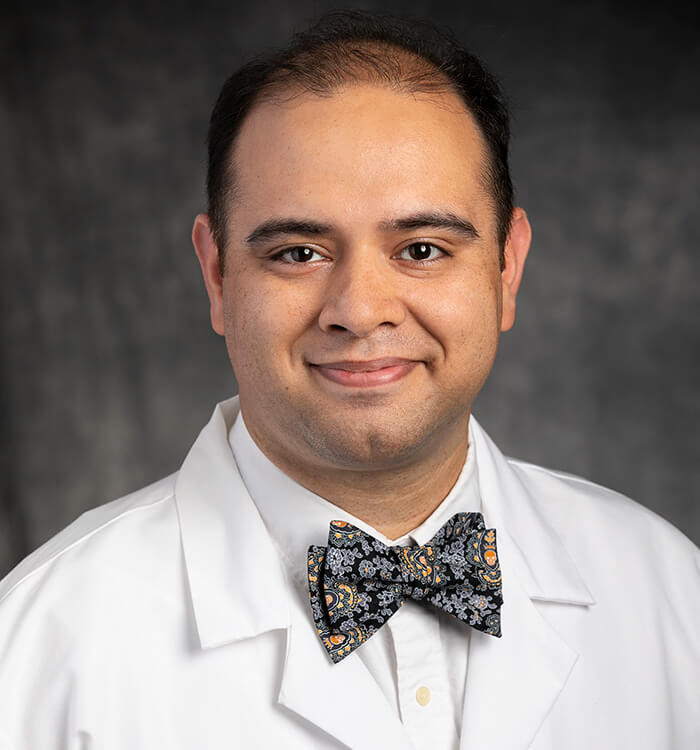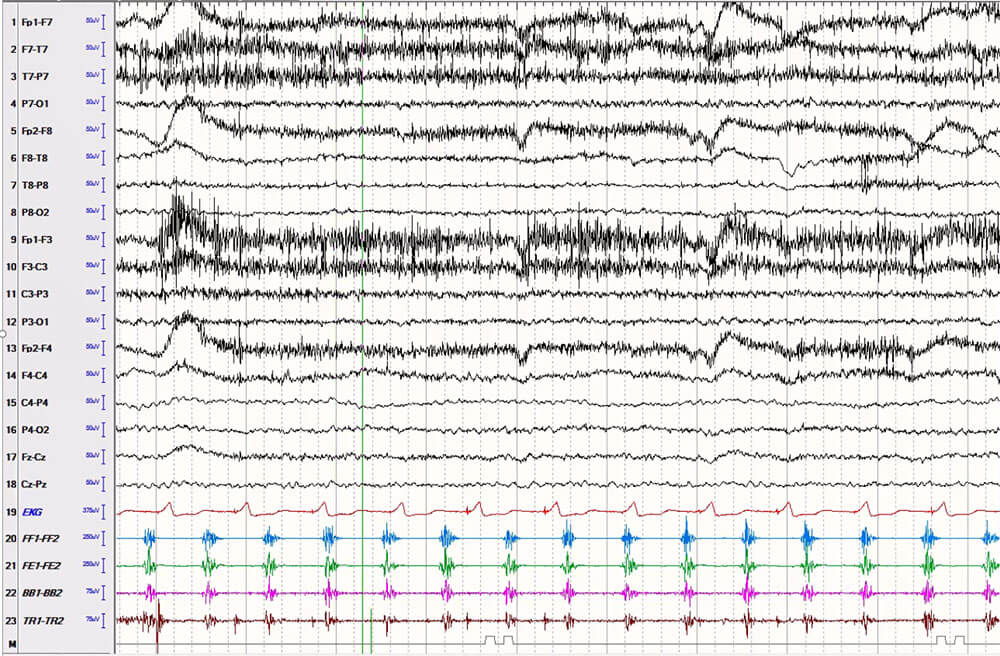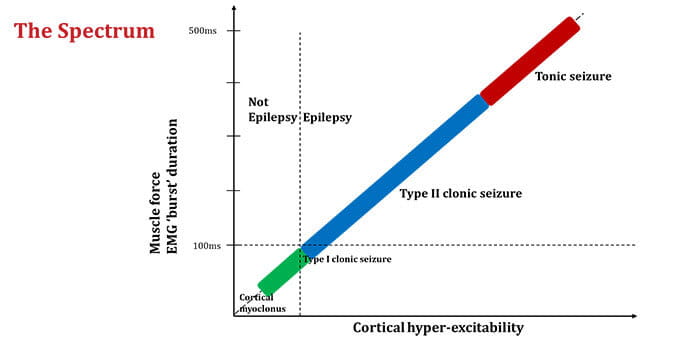University Hospitals and Case Western Reserve University Organized 15th International Epilepsy Colloquium
March 10, 2024
Innovations in Neurology & Neurosurgery | Winter 2024
Last September, University Hospitals Cleveland Medical Centerand Case Western Reserve University welcomed participants to the 15th International Epilepsy Colloquium (IEC). Since 2008, seven renowned epilepsy centers from around the world have organized yearly meetings at alternating venues to bring together leading epileptologists, neurosurgeons and neurologists. Advanced practice providers, neuropsychologists, EEG technologists and other healthcare professionals are also encouraged to attend.
 Guadalupe Fernandez-Baca Vaca, MD
Guadalupe Fernandez-Baca Vaca, MD Neel Fotedar, MD
Neel Fotedar, MD“Each colloquium encompasses a specific theme related to epilepsy, and the most recognized experts in the field are invited to participate,” says Guadalupe Fernandez-Baca Vaca, MD, Director of the Epilepsy Center within the University Hospitals Neurological Institute and Associate Professor at School of Medicine. “No other meeting provides a similar opportunity to facilitate the highly interactive exchange of ideas among thought leaders in epilepsy care.”
The IEC Centers include:
- Goethe Universitat (Germany)
- Grenoble University Hospital (France)
- The Lyon University Hospital Institute for Children and Adolescents with Epilepsy (France)
- Université de Lausanne (Switzerland)
- University College London (England)
- University Hospitals Cleveland Medical Center (USA)
- University of Erlangen (Germany)
The agenda for the 2023 colloquium, “Ictal Semiology and its Value in Epilepsy Surgery,” included more than 50 live sessions and 28 poster presentations. Celebrated at the Tinkham Veale University Center on the campus of Case Western Reserve University, the conference was preceded by the accompanying Comprehensive Epilepsy Course. Fifty-one esteemed speakers and more than 290 participants traveled from Australia, Austria, Canada, Columbia, Denmark, France, Germany, Italy, Switzerland, the United Kingdom and across the U.S.to attend. The event was designated 35 AMA PRA Category 1 credits.
Distinguished Epileptologist Carlo Alberto Tassinari, MD, gave a presentation on hypermotor seizures and central pattern generators. Dr. Tassinari is a professor at the University of Bologna in Bologna, Italy. Hans Lüders, MD, professor of neurology at School of Medicine and eminent leader in the field, presented the 4Dimensional classifications of epilepsy: ictal semiology, the epileptogenic zone, etiology and comorbidities.
“The classification framework Dr. Lüders developed throughout his career has come to characterize the philosophy of UH’s Epilepsy Center and many other epilepsy surgery centers around the world,” Dr. Fernandez-Baca Vaca says. “During his presentation, he introduced some interesting new concepts that generated lively discussion.”
Neel Fotedar, MD, a neurologist and epileptologist within the UH Neurology Institute and Assistant Professor at School of Medicine, presented his “Semiology and Polygraphic Study of Myoclonus, Clonic and Tonic Seizures.” His research was also recently published in Neurology Clinical Practice, a journal of the American Academy of Neurology.
Dr. Fotedar and his colleagues retrospectively reviewed video-EEG recordings of 39 patients admitted to University Hospitals between 2016 and 2022 with clonic seizures to analyze the semiology and ictal EEG findings.
 Caption: EEG-sEMG recording of a patient with right hand clonic seizure. The EEG (first 18 channels) does not show any discernible seizure pattern, but the sEMG channels (channel #20-23) show clear brief tetanic contractions, alternating with brief silent periods, synchronized between flexor and extensor muscle groups, consistent with a cortical/epileptic origin of the clonic movement. This sample shows the value of sEMG recording in analyzing patients with twitching movements, concerning for clonic seizures.
Caption: EEG-sEMG recording of a patient with right hand clonic seizure. The EEG (first 18 channels) does not show any discernible seizure pattern, but the sEMG channels (channel #20-23) show clear brief tetanic contractions, alternating with brief silent periods, synchronized between flexor and extensor muscle groups, consistent with a cortical/epileptic origin of the clonic movement. This sample shows the value of sEMG recording in analyzing patients with twitching movements, concerning for clonic seizures.“As a Level 4 epilepsy center treating complex nonlesional epilepsy patients, we rely on seizure semiology to identify the epileptogenic zone as an essential component of presurgical planning,” he says. “Because we had both EEG and video recording of these patients’ seizures, we were able to analyze the simultaneous data and make correlations about where the clonic seizure originated and how it affected the body.”
The team also utilized surface electromyography processing (EMG) to gather additional recordings for 17 patients in the study. “We developed a protocol within the UH Epilepsy Center for how to place these electrodes to map muscle activation patterns in clonic seizures,” Dr. Fotedar says. “As far as I am aware, our study is the first and largest to report the surface EMG characteristics of this prevalent type of seizure.”
 Caption: Hypothetical scheme demonstrating the spectrum of cortical motor responses from cortical myoclonus to a tonic seizure as a representation of increasing cortical hyper-excitability.
Caption: Hypothetical scheme demonstrating the spectrum of cortical motor responses from cortical myoclonus to a tonic seizure as a representation of increasing cortical hyper-excitability.Additional University Hospitals epilepsy faculty who presented at the colloquium were:
- Michael Devereaux, MD
- Guadalupe Fernandez-Baca Vaca, MD
- Naiara Garcia Losarcos, MD
- Luisa Londono-Hurtado, MD
- Jun Park, MD
- Michael Staudt, MD, MSc
- Jennifer Waldron, DO
- Jonathan Zande, MD
“Participants enjoyed engaging discussions and case presentations illustrating current advances and research in epilepsy surgery, seizure semiology, interpretation and localization outcomes in epilepsy, morbidity and mortality, and neuroinformatics, among many other topics,” Dr. Fernandez-Baca Vaca says. “Each year’s colloquium aims to be highly educational and facilitate future international collaboration among global leaders in the field of epilepsy.
The next IEC is in September 2024, hosted by Dr. Felix Rosenow at Goethe Universitat in Frankfurt, Germany. For more information, contact Sandra Gottschalg at sandra.gottschalg@conventus.de.
Contributing Experts:
Guadalupe Fernandez-Baca Vaca, MD
Director
Epilepsy Center
University Hospitals Neurological Institute
University Hospitals Cleveland Medical Center
Associate Professor
Case Western Reserve University School of Medicine
Neel Fotedar, MD
Neurologist and Epileptologist
Epilepsy Center
University Hospitals Neurological Institute
University Hospitals Cleveland Medical Center
Assistant Professor
Case Western Reserve University School of Medicine


